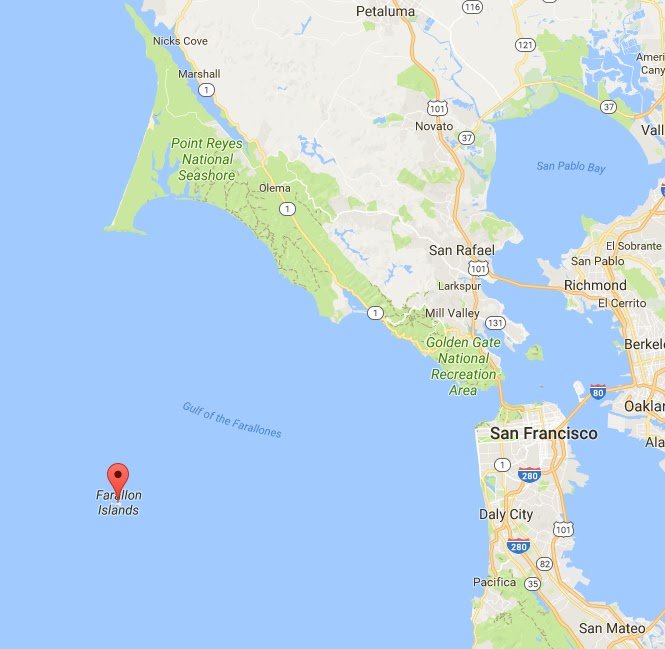Bayview’s Toxic Waste Problem
“Environmental racism or ecological apartheid is a form of institutional racism leading to landfills, incinerators, and hazardous waste disposal being disproportionately placed in communities of color.”
For the last 30 years, a cleanup of radiological and chemical contamination has taken place along the 866-acre Hunters Point dock and waterfront. The dock is located on the shoreline of Bayview, where our site, our youth, and another 35,000 people live. Built and operated since 1867, the Navy bought the Hunters Point dock in 1941 and converted it into a shipyard for the maintenance and repair of warships. Thousands of Bayview residents were employed by this effort.
Around this time, Hunters Point established the Naval Radiological Defense Laboratory in response to recurring bomb and defense tests going wrong during and after the war. The Navy decontaminated thousands of ships after such tests–in the process polluting the soil, sediments, and bay. The NRDL operated until 1969, discontinuing the dangerous process after nearly thirty years. During operation, the U.S. Navy packed and released 47,000 steel drums filled with hazardous waste, and sank them to the bottom of the ocean near the Farallon Islands, just off the shore of San Francisco. Some of what has contaminated the air, soil, and Bay includes: asbestos, oil, heavy metals, petroleum fuels, pesticides, batteries, acids, toxic chemicals, radionuclides and carcinogens. (SF Gov)
After the official closure of the Navy shipyard in 1989, which left hundreds of Bayview residents unemployed and with looming health conditions, leftover debris and contaminants were left at the edge of the water to decay. Research from Bayview grassroots organizations who have formed in retaliation to the abandoned toxic waste have discovered a higher percentage of health conditions in the district compared to the rest of the city. Measured using cumulative impact theory, or the combination of different factors all added together, resulting in greater impact, CalEnviroScreen ranks Bayview at a 92 out of 100 for pollution and radiation vulnerability, standing as one of the worst ranked areas in California.
Data from the 2021 CalEnviroScreen report: The higher the percentage, the more the factor affects the community.
Environmental Factors:
Diesel Particulate Matter: 99%
Groundwater Threats: 97%
Hazardous Waste: 86%
Health Factors:
Asthma: 96%
Low Birth Weight: 97%
Cardiovascular Disease: 46%
Population Characteristics:
Poverty: 60%
Unemployment: 88%
Housing Burden: 97%
The Hunters Point Shipyard is now a Superfund site, with an increase in health impact potentiality because of the new data on the PG&E site that sat alongside the shipyard. Officially closing in 2006, this PG&E site pumped out 550 tons of hazardous waste per year since 1929. This part of the city is so perilous and disregarded that it has been nicknamed, the city’s “Radioactive Basement.”
Of the site’s catalog of health effects on Bayview stands another impending sentence on its residents. In a long-awaited 2021 report from the San Francisco Grand Jury, it is concluded without doubt: As sea levels rise, the contaminated groundwater and buried toxins will mobilize as a result, not only flooding the surrounding community, but poisoning it too.
As climate change worsens and more Bayview residents are getting sick, individuals are standing up against the slow-moving clean-up. Until recently, the single employee of the San Francisco Department of Public Health’s Hunters Point Shipyard program was the only expert on the cleanup process.
Image by Bayview National Black Newspaper, Ahimsa Porter Sumchai MD
Back in August and December of 2021, PEER (Public Employees for Environmental Responsibility) asked for revised efforts of the shipyard cleanup with concerns over contaminants remaining underground and polluting surrounding neighborhoods. PEER argued that the current measures in place violated EPA’s own regulations and, “would leave so much radiological waste that 1 in every 473 people would get cancer or the equivalent of getting a chest X-ray every other day for decades.”
What is concerning Hunters Point is the EPA's response. On September 30, 2022, the agency rejected PEER’s request, instead relying on Hunters Point’s permitted land uses and restrictions to guide their solution.
“The bottom line is that EPA will not commit to the full cleanup of Hunters Point,” noted PEER Director Jeff Ruch, “As things stand now, the plan at Hunters Point is to pave over contamination rather than remove it.”
In the year 2000, 86% of voters voted in favor of Proposition P: that the shipyard be cleaned up to the highest standards established by the EPA, cleaned to a level “which would enable the unrestricted use of the property.” Regardless of Proposition P, the signatories for the official Shipyard cleanup include: the Navy, the California Department of Toxic Substances Control, the EPA, and the SF Bay Regional Water Quality Control Board–all of whom are tied to solution-finding according to their own regulations. “Hunters Point permitted land uses” should not be the primary motivation involved in the cleanup, especially when we can anticipate land-hungry developers coming into focus.
The EPA’s September 2022 response: “Regarding your recommendation that soil radiological cleanup goals be based on an unrestricted use scenario consistent with the City/County of San Francisco’s Proposition P, broadly, EPA’s policy is to achieve protective remedies consistent with reasonably anticipated future land use.”
Anticipated future land use is exactly what has come into play. In the 90s, the Navy began sectioning off the dock into “parcels” to ease the cleanup process and sell off completed sections to the City. According to Superfund language, a site is clean when it meets regulations for “unrestricted use,” which was not achieved by the time housing construction began on completed parcels in 2009. By the time development started, toxins were still at a level that required all soil to be covered by a thick layer of new soil and concrete, and buildings would need special, expensive equipment to redirect the poison seeping up from the ground.
Parcel A residents sued the housing developer after verified reports of Tetra Tech EC Inc., (contracted by the Navy to clean up the hazardous material) published falsified data on the extent of the cleanup. Now, 30 years later, the Navy must retest soil and water samples and complete the cleanup of the remaining parcels. The process is now supposed to last years longer than its anticipated completion date. Not only is hazardous waste lingering in the air and rising water on the shoreline of this community, but the redlined public housing communities nearby are not resourced to withstand either. This is a decades-long example of environmental racism, among the many factors trapping Bayview residents of which majority are Black and Asian, within the district’s concrete borders. The numerous public housing sites where many of our youth live sit closest to the shoreline. And the lives of other vulnerable families are at risk of living among the newly constructed developments, especially without forewarning. The district’s toxic waste problem is backtracking more than it is progressing, and it is poisoning the Bayview community.
For more information on Bayview’s toxic waste problem:
Green Action: An all-encompassing look at the contributions of GreenAction to the fight against environmental racism in Bayview. Including videos, articles, resources.
Physicians for Social Responsibility: Community led organizing for the awareness of the problem and how physicians see the consequences of its lack of clean-up.
Found SF: “Toxic Tours” led and founded by Karen Pierce, given to UCSF medical students. A San Francisco based tour of all the toxic sites in the city, with Bayview Hunters Point highlighted.
San Francisco Civil Grand Jury: 2021-2022 report on the shipyard’s history, the health impacts on Bayview, the developer dilemma, and agency responses.
EPA: Definitions and government history on Superfund sites, a government prospective of the Hunters Point Shipyard.
Abandoned Way Photo History: View historical and present-day photos of the shipyard.
Sources:
CalEnviroScreen. Fact Sheet. GreenAction, https://greenaction.org/wp-content/uploads/2021/06/BVHP-CalEnviroScreen-4.0-Fact-Sheet-.pdf. PDF.
Graf, Carly. “How San Francisco's Bayview neighborhood is battling toxic air.” San Francisco Examiner, 21 November 2021, https://www.sfexaminer.com/archives/how-san-francisco-s-bayview-neighborhood-is-battling-toxic-air/article_982569da-48ce-51e5-aa27-adc5a59f9ad5.html. Accessed 22 February 2023.
“HUNTERS POINT NAVAL SHIPYARD | Superfund Site Profile | Superfund Site Information | US EPA.” gov.epa.cfpub, https://cumulis.epa.gov/supercpad/SiteProfiles/index.cfm?fuseaction=second.Cleanup&id=0902722#bkground. Accessed 22 February 2023.
Johnson, Clarence. “Disputed S.F. Power Plant Expected to Get 1st OK / Neighbors worry about health issues.” SFGATE, 4 March 1996, https://www.sfgate.com/news/article/Disputed-S-F-Power-Plant-Expected-to-Get-1st-OK-2991805.php. Accessed 22 February 2023.
Romero, Ezra David. “For These Black Bayview-Hunters Point Residents, Reparations Include Safeguarding Against Rising, Toxic Contamination.” KQED, 5 July 2022, https://www.kqed.org/science/1979614/for-these-black-bayview-hunters-point-residents-reparations-include-safeguarding-against-rising-toxic-contamination. Accessed 22 February 2023.
Suzdaltsev, Jules. “Hunters Point Is San Francisco's Radioactive Basement.” VICE, 12 June 2014, https://www.vice.com/en/article/qbe3wv/hunters-point-is-san-franciscos-radioactive-basement. Accessed 22 February 2023.
2021-2022 Jurors. “Hunters Point, SLR Report, FINAL CORRECTED (6.13.22).” San Francisco Civil Grand Jury, SF Gov, 13 June 2022, https://civilgrandjury.sfgov.org/2021_2022/2022%20CGJ%20Report_Buried%20Problems%20and%20a%20Buried%20Process%20-%20The%20Hunters%20Point%20Naval%20Shipyard%20in%20a%20Time%20of%20Climate%20Change.pdf. Accessed 13 February 2023.
United States Environmental Protection Agency. “Hunters Point Naval Shipyard San Francisco CA Cleanup Activities.” Superfund Site, https://peer.org/epa-says-hunters-point-will-never-be-fully-cleaned/ https://cumulis.epa.gov/supercpad/SiteProfiles/index.cfm?fuseaction=second.Cleanup&id=0902722#bkground.
Caycedo, Carolina. “Environmental racism.” Wikipedia, https://en.wikipedia.org/wiki/Environmental_racism. Accessed 22 February 2023.



